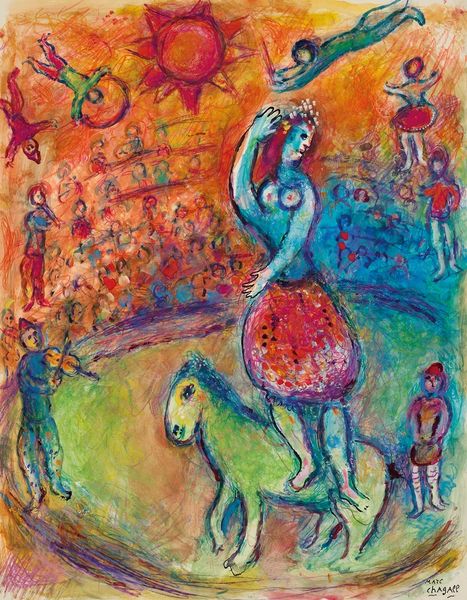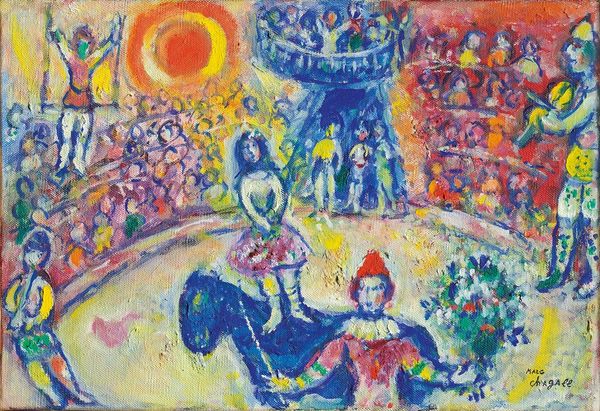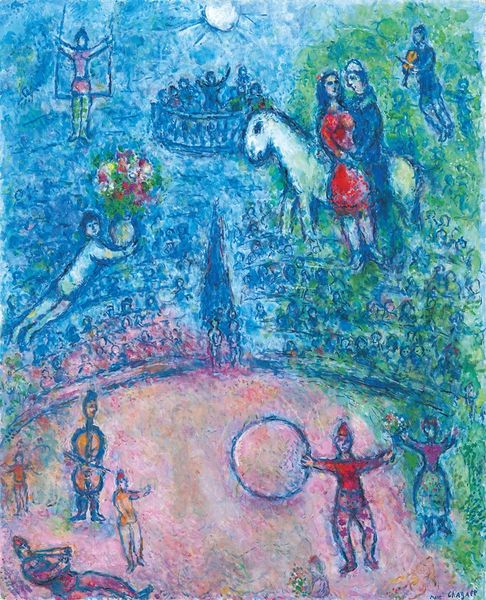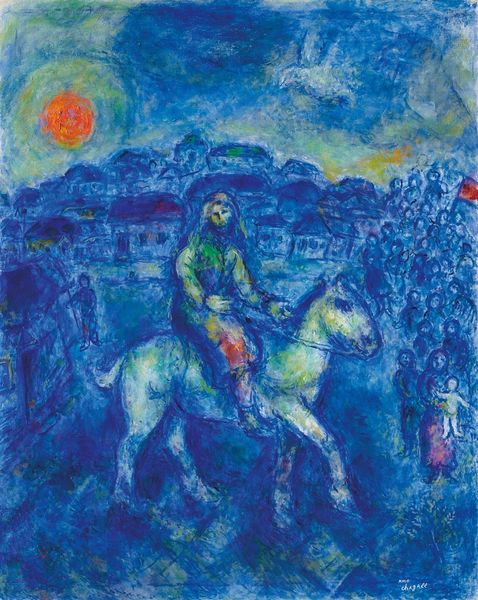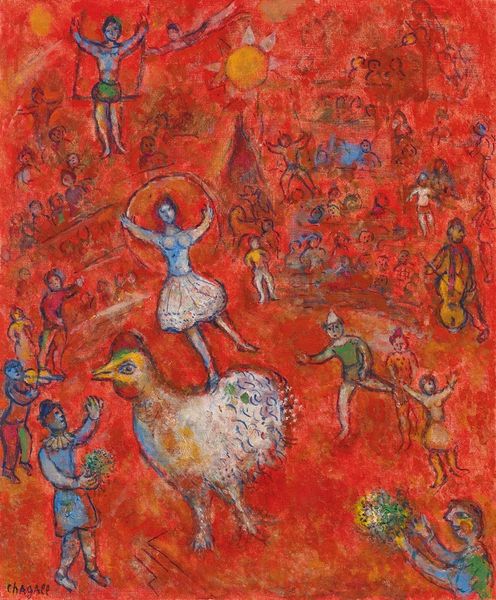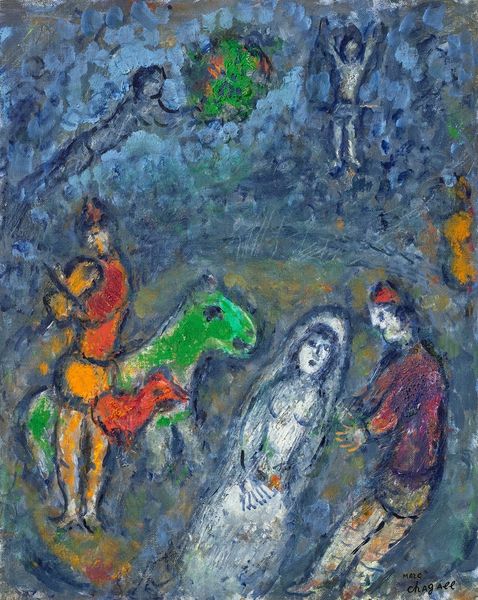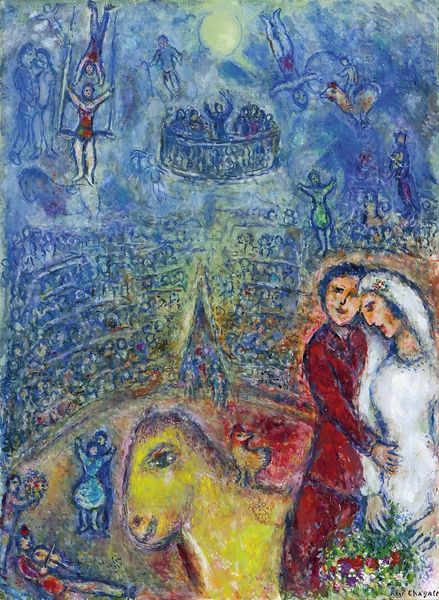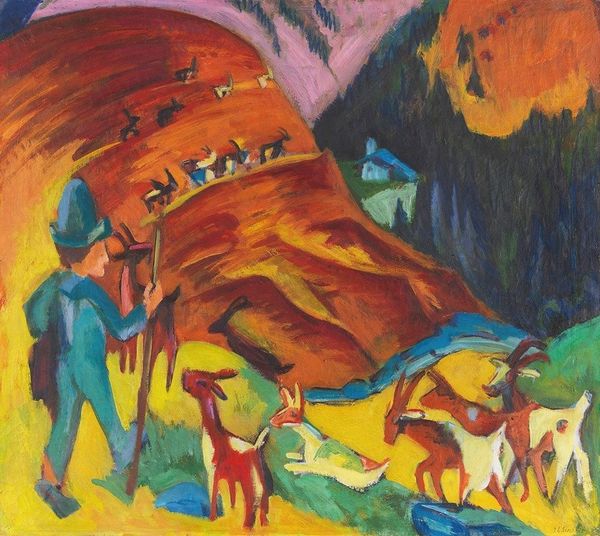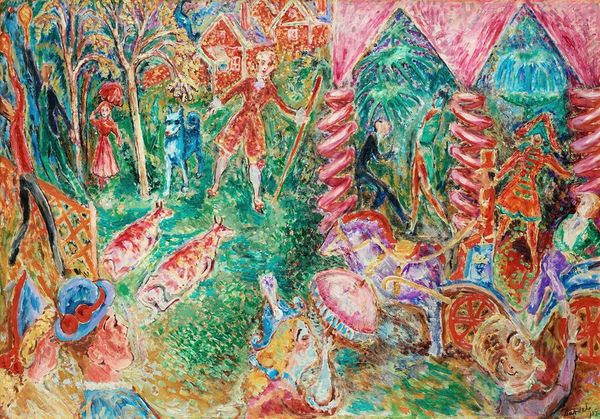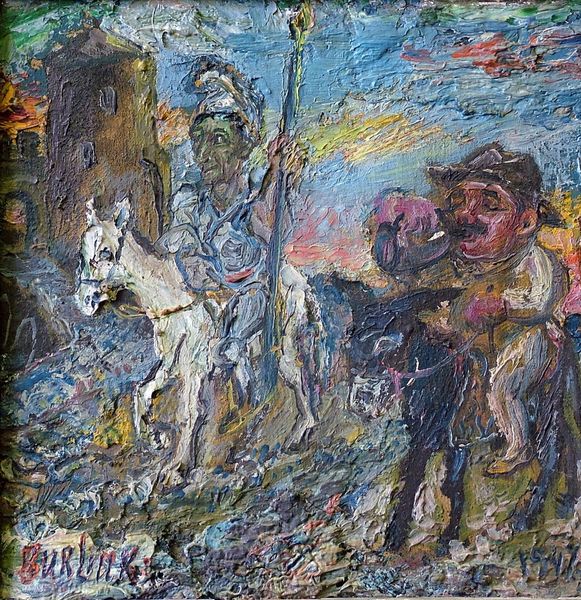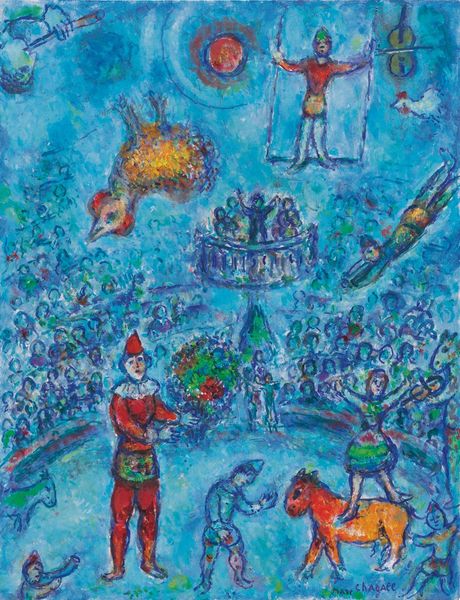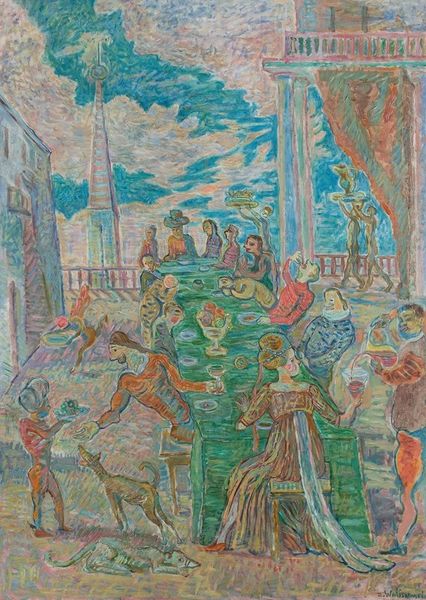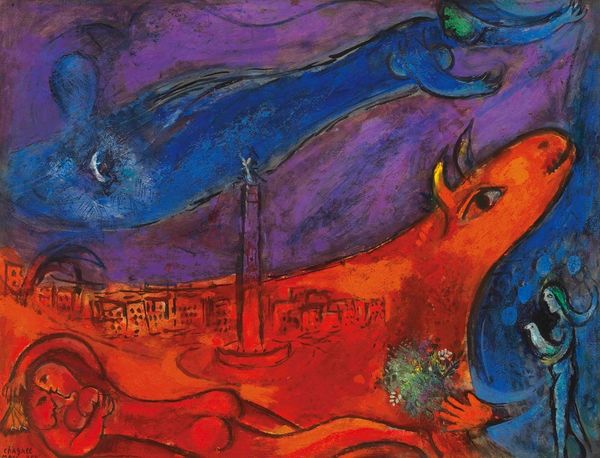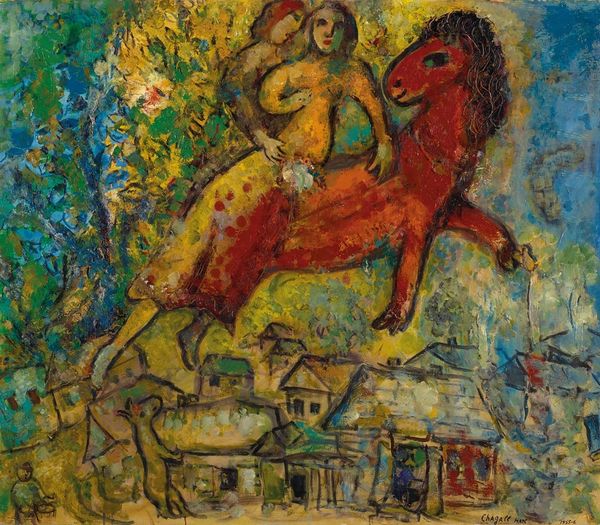
Copyright: Modern Artists: Artvee
Curator: Let's explore Marc Chagall's "Au village rouge," painted in 1973. What strikes you first? Editor: That pervasive red! It's built from such energetic brushstrokes, almost frantic, covering everything from the ground to the houses. There’s a real rawness in the materiality of the paint application itself. Curator: Indeed. The color choices carry enormous weight, especially that dominant red. It could symbolize passion, warmth, even danger. Look at how the villagers almost seem to melt into that fiery background. It reflects a deep connection, almost a shared soul, between the people and their place. It has appeared in a lot of the Slavic art. Editor: Soul maybe, but also exploitation. Consider the sheer cost of pigment. Red dyes, historically, were incredibly valuable, sourced from rare materials and processes. This painting performs a certain class status through sheer expenditure on intensely-hued color. Curator: I understand that concern. But consider, the blue horse! The woman joyfully riding. These recurring figures in Chagall’s visual vocabulary—they express the dreams and longings of the Jewish diaspora. The red is not only fire; it represents a persistent dream despite difficult social conditions. Editor: Yes, that horse intrigues me. Its unexpected color draws attention to its creation. Blue is built up layer upon layer; clearly time and skill were involved in layering. That’s a crucial labor process rendered visible, contrasting that joyful scene. Curator: Exactly, and these elements offer a visual vocabulary, steeped in cultural meaning and memory, inviting viewers to engage with themes of home, belonging, and perhaps, a longing for simpler times. Editor: By recognizing these constructed elements and materials, it is easier to find real value. The physical making of it embodies an attempt at freedom within the context of societal constraints. I understand better the layers involved. Curator: And through that understanding, we touch upon the true resonance held by Chagall's "Au village rouge." Editor: Yes. It shows that what you put in comes out as valuable expression.
Comments
No comments
Be the first to comment and join the conversation on the ultimate creative platform.
